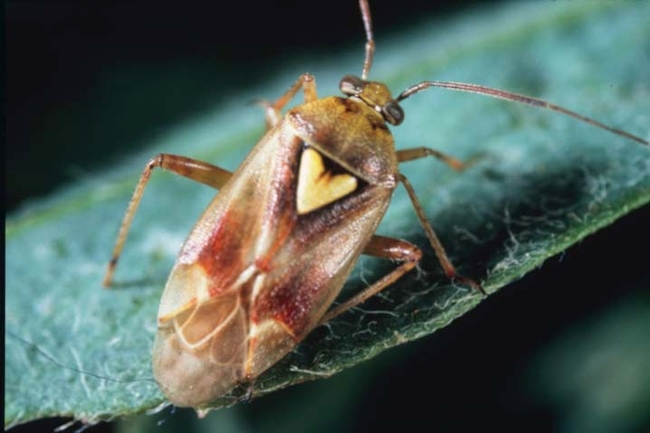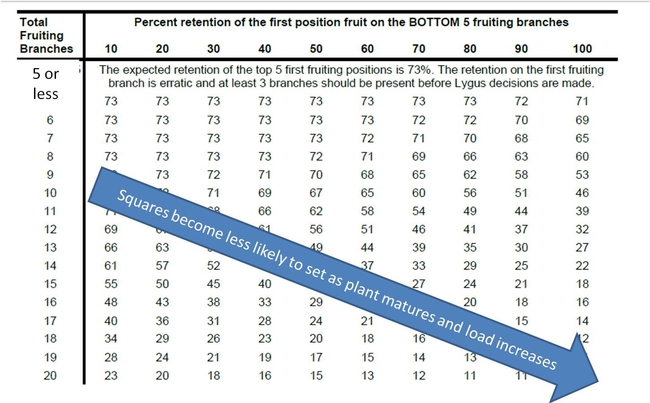For over 20 years, UC has recommended plant based measurements as a basis for production decisions. These decisions include timing for Lygus treatments, using plant growth regulators, determining crop cutout and planning for defoliation. Details are

Why use plant based measures? Think of the plant like a patient in the physician’s office. Often questions that the doctor asks helps guide us toward a treatment. Likewise the cotton can tell a story, if you know how to read it. For Lygus management decisions, there are three key features; the age of the plant (number of fruiting branches), the early fruit (retention of fruit on the bottom five fruiting branches) and the current fruit load (retention of fruit on the top five fruiting branches).
The cotton plant cannot lie about previous stress it has suffered, including cool weather, early insect damage, poor irrigation timing or heat. Competition within the cotton plant for
resources is One stress we often ignore. Cotton produces more fruit than it can
mature because it produces fruit as insurance for its species survival. Thus,
as the season progresses, fruit is less likely to be retained under normal
yield loads. We know this because we measured it and can provide predictive
guidance about the probability of any fruit being maintained to harvest.
If you know the age of the plant, the current fruit load on the bottom and the current fruit load in top, you can determine whether your current retention is greater than expected (see table). If fruit was lost early, regardless of the cause, the current top fruit is more valuable and should be retained.

Letting the cotton plant tell its story is essential for setting treatment thresholds for Lygus. The threshold is dynamic depending on crop condition, age of the plant, time of year and surrounding sources for pests. Please go to cottoninfo.ucdavis.edu/IMAGES/FieldCheck_June_2011.pdf
and download, Using Plant Based Measurements to Support Lygus Management Decisions.